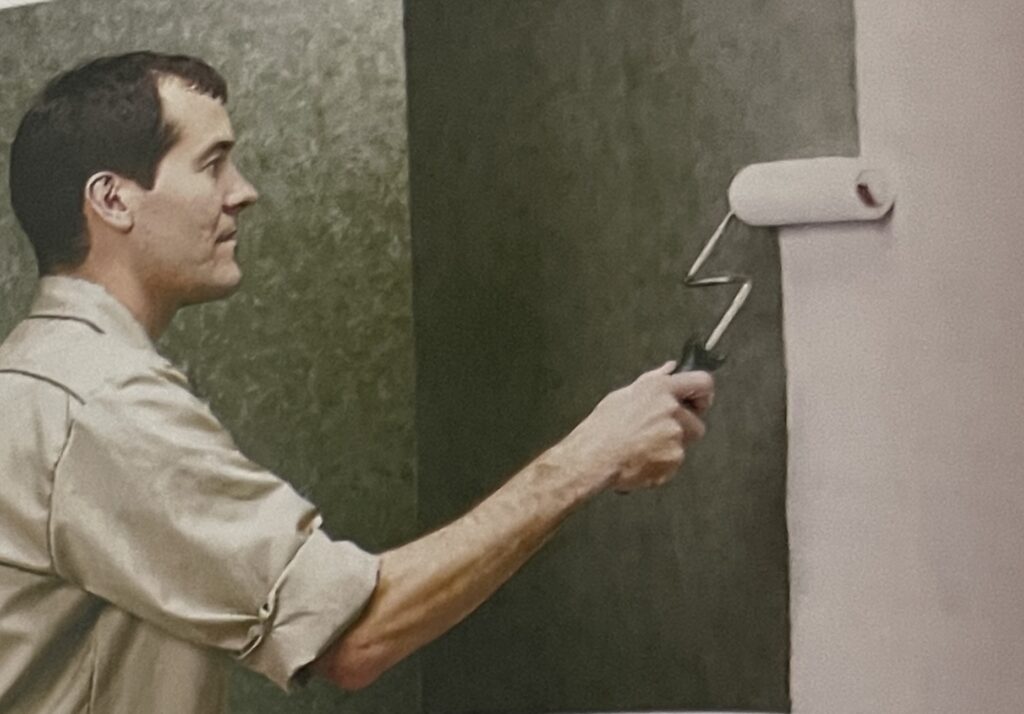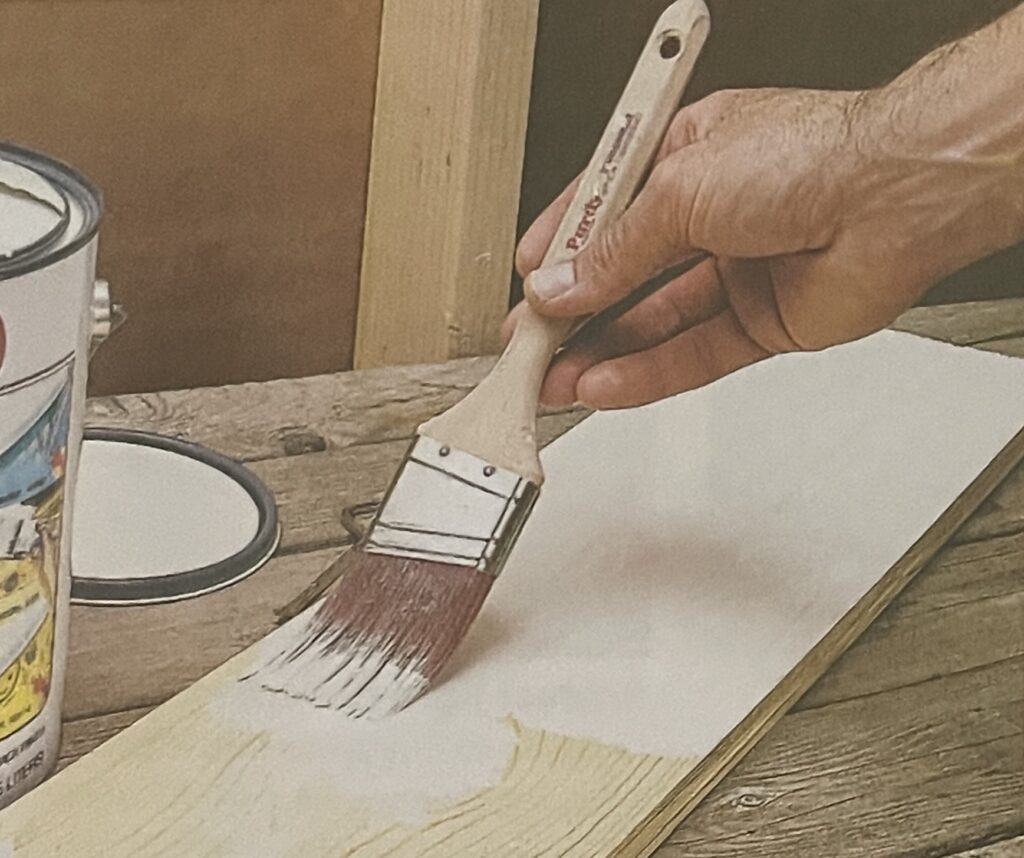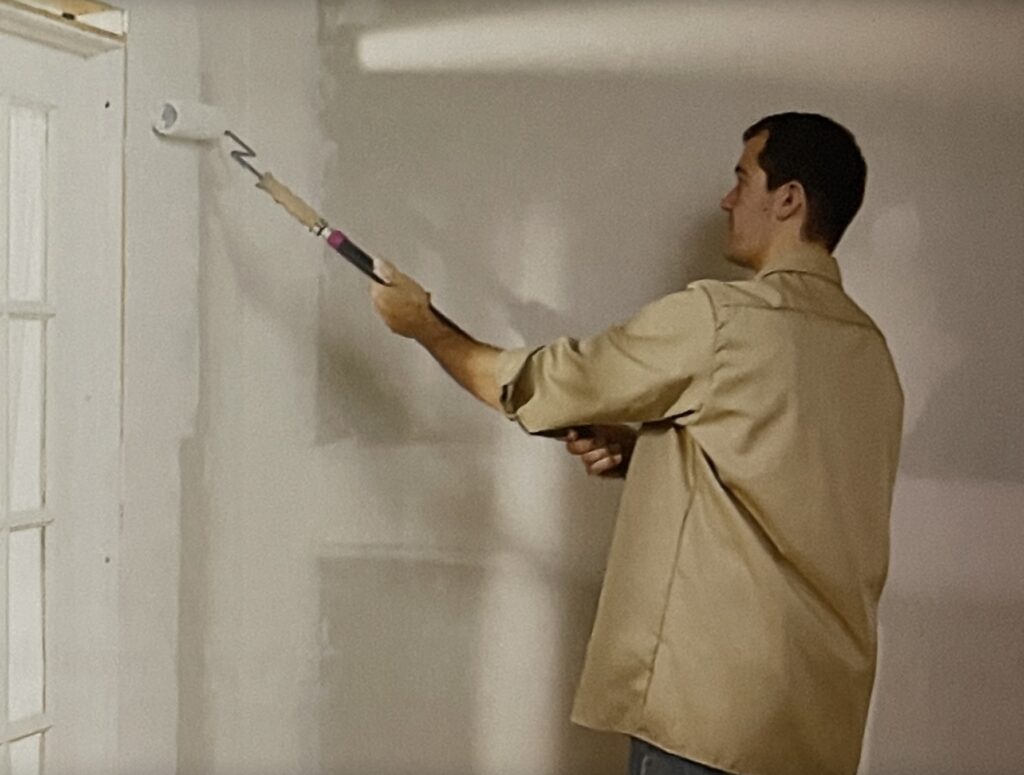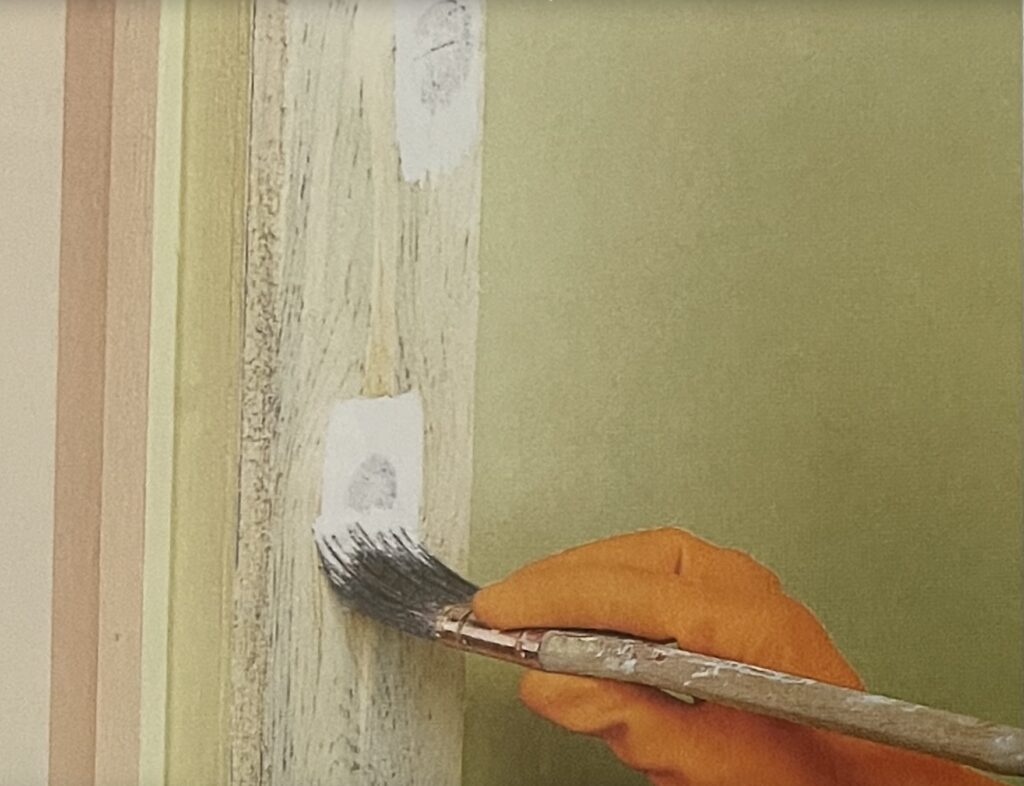Priming is as important as painting for a professional-looking finish. This step can make the difference between a smooth, stain-free finish and one that looks blotchy or streaked-it’s not just a way to sell you one more paint product. A specially formulated primer does several things:
Increases adhesion.
Prevents marks on an old surface from bleeding through the new coat of paint. These include stains from water, dirt, smoke, etc.; tannins from aromatic woods; or resins from knots and pitch pockets.
Gives the finish coat a uniform appearance.
Increases the finish coat coverage.
Allows the finish coat to develop maximum sheen.
Makes metal more corrosion-resistant.

Walls should be clean and smooth before you roll on a coat of high-adhesion primer. Make sure that old wallpaper is firmly attached to the wall, Repair any rips, gouges, nicks, indentations, bulges, and tears.

Prime new wood, old bare wood, and pressure treated lumber with a stain-killing primer to block resins and tannins in the wood; otherwise, they will bleed through the paint. Let the primer dry thoroughly according to the manufacturer’s instructions before applying the finish color.

Prime new drywall to conceal the difference belween aped and untaped areas and screw patches. This step is critical, especially if you plan to install wallpaper; failure to prime beforehand will result in ripped drywall if wallpaper is later removed.
BUYER’S GUIDE
ENVIRONMENTALLY FRIENDLY PRODUCTS
Did you know that indoor air is about three times more polluted than outdoor air? Paints and primers with fumes cause a lot of the problem. The disposal of unused alkyd-base coatings has also become an important environmental issue, and some areas have outlawed them altogether. As a result, many products are changing as their levels of volatile organic compounds (VOCs) come down.
Oil-base primers and primer sealers are being replaced by urethane modified acrylics (UMAs) and water-base oil paints. Natural, Zero VOC, and Low VOC paints – safer for you and the environment-are replacing older latex paints.
They may be slightly more expensive, but prices are likely 1o come down. If you can’t find traditional oils, are sensitive to paint and primer tumes, have other health concerns, or want to lessen your environmental footprint, try newer paints and primers. Ai the very least, try to buy products with the highes Percentages of solids lless room for volatile ingredients), the lowest percentages of ethylene glycol (a solvent in latex and, it using point strippers, little or no methylene chloride (MC), a caustic ingredient.
Types of primer
Just as primer is different from finish paint, there are different primers for different problems and applications. Apply all primers wich adequate ventilation in the room.
Polyvinyl acetate (PVA) latex primer seals new drywall for painting. If the joint compound and paper face on drywall are not primed, they absorb too much water from finish latex paint. PVA is not intended for trim or previously painted surfaces. Cleanup is with water.
High-adhesion primer (also called all-purpose primer) is a general term for any primer designed for maximum adhesion to nonporous surfaces, such as metal, glass, tile, and thermoplastics such as laminated plastic and melamine. It is slightly more difficult to work with than a conventional latex primer, but the results are well worth the effort. Cleanup is with soap and water.
Latex stain-blocking primer stops many stains from coming through the paint. For difficult stains, such as washable markers, use oil-base or alcohol-base primer instead.
Oil-base, stain-blocking primer effectively blocks crayon, permanent-marker inks, grease, and water stains. This is often the best primer to keep an unremovable stain from bleeding through paint. Clean-up is with paint thinner.
Alcohol-base, white-pigmented shellac is an excellent choice for hard-to-block stains. It has excellent adhesion, effectively blocks smoke and nicotine stains, water stains, and all of the tannins and resins in wood; it also inhibits pet odors. It is not weatherproof and can be damaged by UV rays, however, so it is recommended only for interior use. The exception is for spot-priming knots on pine trim and clapboards before painting them. Cleanup is with denatured alcohol.
Enamel undercoat contains a high percentage of solids and can be used under satin, semigloss, or gloss paints to enhance their gloss finishes. When it dries hard, you can sand it to produce the smoothest possible base for your finish coat. Cleanup is with soap and water.

Stains may still be visible, even after being coated with some primers because the primers absorb, rather than block, the stain. Use a stain blocker before you prime; allow it to dry thoroughly. This will help ensure that stubborn stains don’t bleed through, ruining an otherwise perfect finish.

Tinting the primer helps ensure good coverage, especially when you make a dramatic color change. Ask a salesperson for advice. Remember that there are limitations on the amount of tint a primer can hold and still be effective. Follow the manufacturer’s recommendations.
OOPS
PRIME MISTAKE
After applying four coats of expensive designer color, a homeowner wondered why it wasn’t covering the stains on his wall. He insisted that he had primed first, and was proud that he had saved money by using leftover latex paint to do it. That was his problem: Regular latex paint isn’t primer. Primer provides bonding and stain blocking; paint provides durability and color. You need the benefits of both to do a good job.
WORK SMART
PRIME INFO ON DARK COLORS
It seems logical that darker colors of paint hide underlying colors better, but it’s not necessarily true.
When changing to a dark, rich color, you’ll need to use a tinted primer and at least two coats of paint to get good coverage. Otherwise, even a dark color looks streaky.

